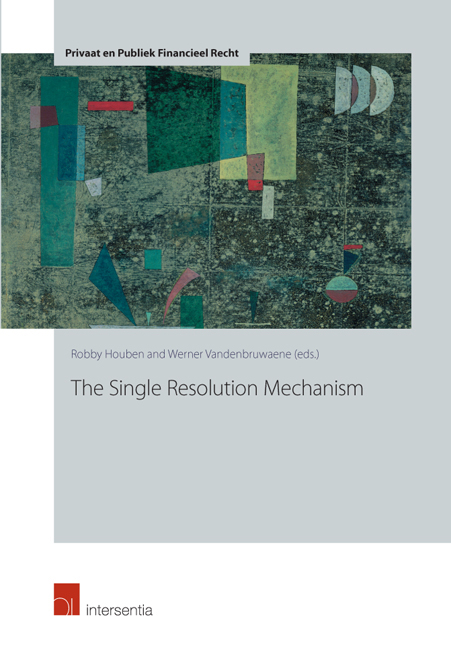Book contents
- Frontmatter
- Preface
- Contents
- Introduction: Recovery and Resolution, Future Solutions for Dealing with Insolvency
- The Single Resolution Mechanism. Institutional and Financing Arrangements for Bank Resolution in the European Banking Union
- Resolution from the Belgian Resolution Authority's Perspective
- Judicial Protection in the Single Resolution Mechanism
- The Rules on State Aid and the Framework for Bank Resolution: Foreplay and Interplay
- Concluding Remarks on Resolution and Resolvability Challenges
Preface
Published online by Cambridge University Press: 25 September 2018
- Frontmatter
- Preface
- Contents
- Introduction: Recovery and Resolution, Future Solutions for Dealing with Insolvency
- The Single Resolution Mechanism. Institutional and Financing Arrangements for Bank Resolution in the European Banking Union
- Resolution from the Belgian Resolution Authority's Perspective
- Judicial Protection in the Single Resolution Mechanism
- The Rules on State Aid and the Framework for Bank Resolution: Foreplay and Interplay
- Concluding Remarks on Resolution and Resolvability Challenges
Summary
On 7 October 2016, the research groups Business & Law and Government & Law of the University of Antwerp organised a study event on the Single Resolution Mechanism or SRM. This study event's aim was to take stock of this new regime relating to the resolution of banks in the Eurozone after the first months of application. This book is the direct result of that study event.
The SRM constitutes the second pillar of the so-called Banking Union; the first pillar being the Single Supervisory Mechanism or SSM. The SRM is complementary to the SSM. While the SSM aims to reduce the risk of bank failure, by unifying the supervision of banks, the SRM increases the likelihood that a bank has been made “safe to fail”, if it is likely to fail, and reduces the risk that governments might have to bail out a bank, were it to actually fail.
The SRM is built around the Single Resolution Board, or SRB, a newly established independent European agency with legal personality. The SRB is responsible for the SRM's effective and consistent functioning. This involves the responsibility to draw up resolution plans and to adopt all of the decisions relating to resolution for the institutions that are within its purview. The actual execution of the resolution scheme adopted must be closely monitored by the SRB, but it is carried out by the national resolution authorities. The SRB is also in charge of the so-called Single Resolution Fund, which comprises a European pool of money that is transferred from domestic resolution funds, financed by the banking sector and is set up to ensure that medium-term funding support is available while a credit institution is being restructured.
As of 1 January 2016, both the SSM and the SRM function alongside each other; there are various interrelations between both mechanisms. One example of this is the assessment of the conditions for resolution of a significant bank or banking group, in which both the ECB (as a key actor in the SSM) and the SRB have roles to play. Three conditions apply here. Firstly, a bank should be failing or likely to fail.
- Type
- Chapter
- Information
- The Single Resolution Mechanism , pp. v - viPublisher: IntersentiaPrint publication year: 2017



